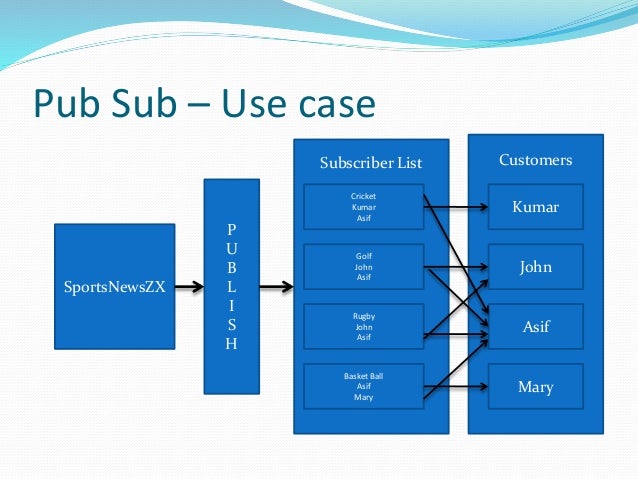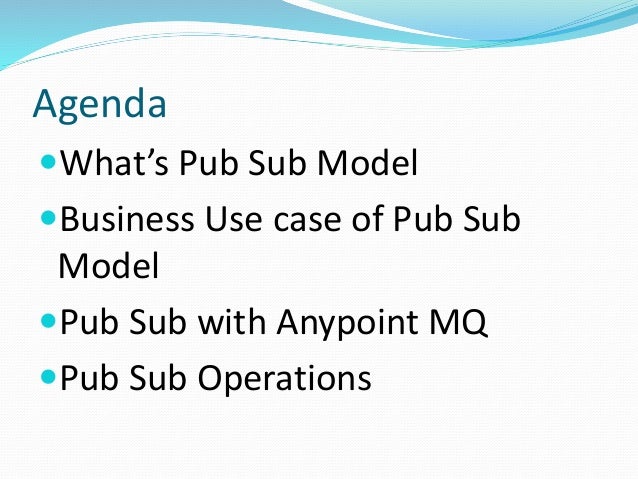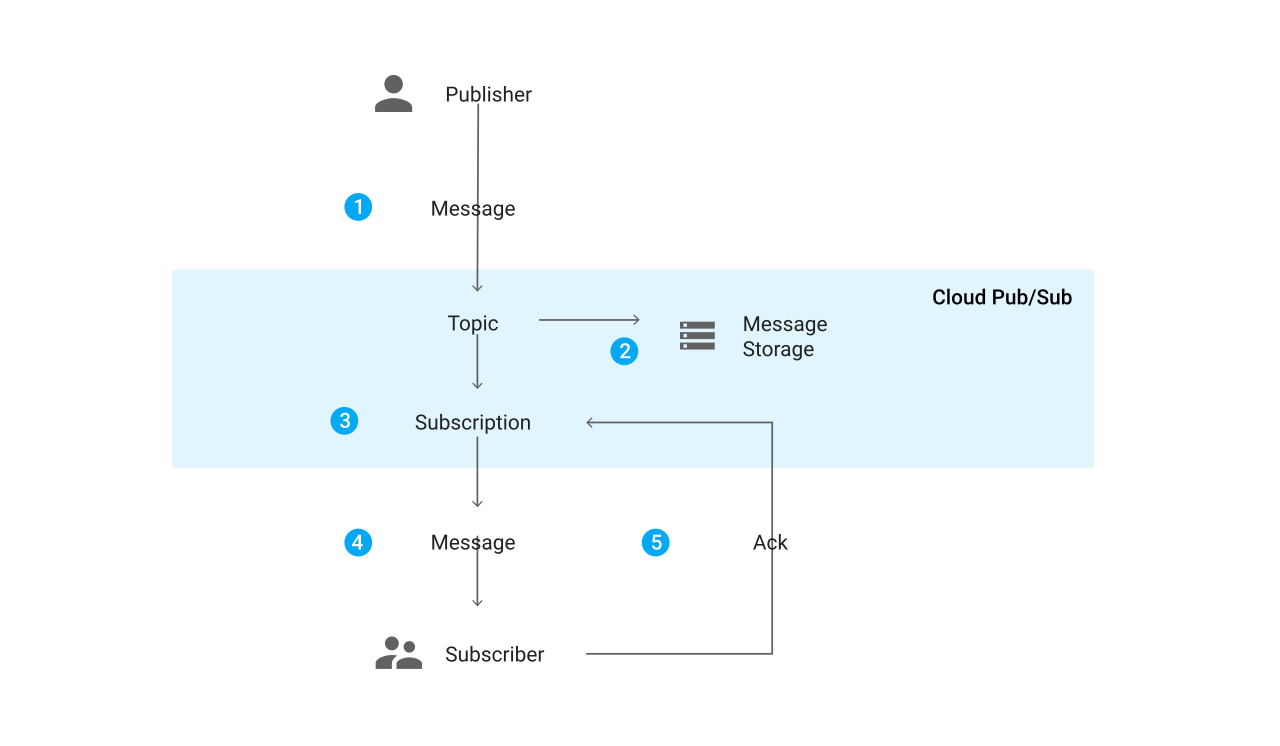What is the Pub Sub Model?
The Pub Sub model, short for publish-subscribe, is a messaging pattern that enables communication between distributed systems. It is designed to decouple the components of a system, allowing them to interact indirectly through a message broker. This pattern is widely used in modern software architecture due to its scalability, fault tolerance, and flexibility.
In contrast to traditional request-response models, where components communicate directly with each other, the Pub Sub model relies on the exchange of messages through a message broker. This intermediary component is responsible for receiving messages from publishers, storing them temporarily, and delivering them to subscribers. The decoupling of components in the Pub Sub model provides several benefits, including increased scalability, reduced dependencies, and improved fault tolerance.
The Pub Sub model is particularly useful in scenarios where there is a need for real-time data processing, high-volume messaging, or the integration of multiple systems. For example, it is commonly used in financial systems, social media platforms, and IoT applications. By enabling components to communicate asynchronously, the Pub Sub model allows for the efficient handling of large volumes of data, while minimizing the risk of system failures and downtime.
Key Components of the Pub Sub Model
The Pub Sub model consists of three main components: publishers, subscribers, and the message broker. Each component plays a critical role in the system and is responsible for specific functions.
Publishers are the components that generate and publish messages to the message broker. They are not aware of the subscribers that will receive the messages and do not require any direct interaction with them. Publishers can be any application, service, or device that generates data, such as sensors, databases, or user interfaces.
Subscribers, on the other hand, are the components that receive and consume messages from the message broker. They express interest in specific topics or types of messages and receive only the messages that match their interests. Subscribers can be any application, service, or device that requires data, such as analytics engines, data processing pipelines, or user interfaces.
The message broker is the intermediary component that receives messages from publishers and delivers them to subscribers. It is responsible for managing the flow of messages, storing them temporarily, and ensuring that they are delivered to the correct subscribers. The message broker can be implemented using various technologies, such as message queues, topic-based publish-subscribe systems, or content-based publish-subscribe systems.
The roles and responsibilities of each component in the Pub Sub model are as follows:
Publishers generate and publish messages to the message broker. They are responsible for formatting the messages according to the agreed-upon message format and ensuring that they are delivered to the message broker.
Subscribers express interest in specific topics or types of messages and receive only the messages that match their interests. They are responsible for consuming the messages and processing them according to their requirements.
The message broker manages the flow of messages, stores them temporarily, and ensures that they are delivered to the correct subscribers. It is responsible for maintaining the state of the system, handling failures and errors, and ensuring that the system is scalable and reliable.
Benefits of Using the Pub Sub Model
The Pub Sub model offers several benefits that make it an attractive choice for modern software architecture. Its advantages include scalability, fault tolerance, and decoupling of components.
Scalability is one of the most significant benefits of the Pub Sub model. By allowing components to communicate asynchronously, the Pub Sub model enables the system to handle large volumes of data and traffic. This makes it an ideal choice for applications that require real-time data processing, such as financial systems, social media platforms, and IoT applications.
Fault tolerance is another advantage of the Pub Sub model. By decoupling components, the system can continue to operate even if one of the components fails. This reduces the risk of system failures and downtime, ensuring that the system is always available to users.
Decoupling of components is also a significant benefit of the Pub Sub model. By allowing components to communicate indirectly, the system can be designed to be more modular and flexible. This makes it easier to add, remove, or modify components without affecting the rest of the system.
Real-world examples of successful implementation of the Pub Sub model include financial systems, social media platforms, and IoT applications. For example, financial systems use the Pub Sub model to handle high-volume messaging and real-time data processing. Social media platforms use it to enable real-time updates and notifications. IoT applications use it to handle large volumes of data generated by sensors and devices.
In summary, the Pub Sub model offers several benefits, including scalability, fault tolerance, and decoupling of components. Its advantages make it an attractive choice for modern software architecture, particularly for applications that require real-time data processing, high-volume messaging, or the integration of multiple systems.
How to Implement the Pub Sub Model
Implementing the Pub Sub model involves several steps, including designing the message broker, defining the message format, and integrating publishers and subscribers. Here are some best practices and code snippets to help you get started.
Designing the Message Broker:
The message broker is the heart of the Pub Sub system. It is responsible for managing the flow of messages, storing them temporarily, and ensuring that they are delivered to the correct subscribers. When designing the message broker, consider the following factors:
Scalability: The message broker should be able to handle large volumes of data and traffic.
Fault tolerance: The message broker should be designed to handle failures and errors gracefully.
Security: The message broker should be secure and protect against unauthorized access.
Defining the Message Format:
The message format should be defined in a way that is easy to understand and parse. Common message formats include JSON, XML, and Protocol Buffers. When defining the message format, consider the following factors:
Readability: The message format should be easy to read and understand.
Parsability: The message format should be easy to parse and process.
Extensibility: The message format should be extensible and allow for future changes.
Integrating Publishers and Subscribers:
Publishers and subscribers should be integrated with the message broker using a standard protocol, such as MQTT, AMQP, or REST. When integrating publishers and subscribers, consider the following factors:
Interoperability: The integration should be interoperable and work with different programming languages and platforms.
Performance: The integration should be efficient and performant.
Scalability: The integration should be scalable and allow for the addition of new publishers and subscribers.
Here is an example code snippet in Python that demonstrates how to implement the Pub Sub model:
import paho.mqtt.client as mqtt # Define the message broker broker = "localhost" # Define the message format message = {"topic": "test", "message": "Hello, World!"} # Define the MQTT callback function def on\_connect(client, userdata, flags, rc): print("Connected with result code "+str(rc)) client.publish(message["topic"], message["message"]) # Create the MQTT client client = mqtt.Client() # Connect to the message broker client.connect(broker, 1883, 60) # Start the MQTT loop client.loop\_start() In this example, we define the message broker as “localhost” and the message format as a dictionary with two keys: “topic” and “message”. We then define the MQTT callback function “on_connect” that is called when the client connects to the message broker. In the callback function, we publish the message to the message broker. Finally, we create the MQTT client, connect to the message broker, and start the MQTT loop.
In conclusion, implementing the Pub Sub model involves several steps, including designing the message broker, defining the message format, and integrating publishers and subscribers. By following best practices and using standard protocols, you can create a scalable, reliable, and secure Pub Sub system that meets the needs of your application.
Challenges and Limitations of the Pub Sub Model
While the Pub Sub model offers many benefits, it also has some potential drawbacks and limitations. Here are some of the most significant challenges and limitations, along with solutions and workarounds to overcome them.
Message Delivery Guarantees:
One of the biggest challenges of the Pub Sub model is ensuring message delivery guarantees. In some cases, it is critical to ensure that messages are delivered exactly once, at least once, or at most once. However, achieving these guarantees can be difficult, especially in distributed systems with high volumes of data and traffic.
To overcome this challenge, consider using a message broker that supports message delivery guarantees, such as Apache Kafka or RabbitMQ. These message brokers offer features such as transactional messaging, message acknowledgements, and message deduplication to ensure message delivery guarantees.
Security:
Another challenge of the Pub Sub model is ensuring security. Since messages are transmitted over a network, they can be intercepted or tampered with by unauthorized users.
To overcome this challenge, consider using encryption, authentication, and authorization mechanisms to secure the message broker and the messages. For example, you can use SSL/TLS to encrypt messages in transit, or you can use JWT or OAuth2 to authenticate and authorize users.
Monitoring:
Monitoring is another challenge of the Pub Sub model. Since messages are transmitted asynchronously, it can be difficult to track the flow of messages and diagnose issues in real-time.
To overcome this challenge, consider using monitoring and logging tools to track the flow of messages and diagnose issues. For example, you can use tools such as Prometheus, Grafana, or ELK Stack to monitor the message broker and the messages.
In conclusion, while the Pub Sub model offers many benefits, it also has some potential drawbacks and limitations, such as message delivery guarantees, security, and monitoring. By using best practices and tools such as message brokers, encryption, authentication, authorization, and monitoring, you can overcome these challenges and design a scalable, reliable, and secure Pub Sub system that meets the needs of your application.
Popular Pub Sub Implementations
The Pub Sub model is widely used in modern software architecture, and there are many popular implementations available. Here are some of the most popular Pub Sub implementations, along with their features, strengths, and weaknesses.
Apache Kafka:
Apache Kafka is a distributed streaming platform that supports the Pub Sub model. It is designed to handle high volumes of data and traffic, making it an ideal choice for real-time data processing and analytics. Kafka offers features such as message persistence, replication, and partitioning, which make it highly scalable and fault-tolerant.
Strengths:
High throughput and low latency
Message persistence and replication
Partitioning and scalability
Weaknesses:
Complex configuration and management
Limited message delivery guarantees
RabbitMQ:
RabbitMQ is a message broker that supports the Pub Sub model. It is designed to handle high volumes of data and traffic, making it an ideal choice for real-time messaging and integration. RabbitMQ offers features such as message routing, queuing, and delivery guarantees, which make it highly reliable and secure.
Strengths:
Advanced message routing and queuing
Strong message delivery guarantees
Secure and reliable
Weaknesses:
Lower throughput and higher latency compared to Kafka
Complex deployment and management
Google Cloud Pub/Sub:
Google Cloud Pub/Sub is a fully-managed message broker that supports the Pub Sub model. It is designed to handle high volumes of data and traffic, making it an ideal choice for real-time messaging and integration. Google Cloud Pub/Sub offers features such as message compression, retention policies, and monitoring, which make it highly scalable and reliable.
Strengths:
Fully-managed and easy to deploy
Message compression and retention policies
Monitoring and diagnostics
Weaknesses:
Limited message delivery guarantees
Higher cost compared to self-managed solutions
In conclusion, there are many popular Pub Sub implementations available, each with its own features, strengths, and weaknesses. When choosing a Pub Sub implementation, consider factors such as scalability, fault tolerance, security, and cost. By selecting the right Pub Sub implementation, you can design a scalable, reliable, and secure system that meets the needs of your application.
Best Practices for Designing a Pub Sub System
Designing a scalable, reliable, and secure Pub Sub system can be challenging, but there are some best practices and guidelines that can help. Here are some best practices for designing a Pub Sub system that meets the needs of your application.
Message Compression:
To reduce the size of messages and improve throughput, consider using message compression techniques such as gzip or snappy. Message compression can help reduce network bandwidth usage and improve message processing times.
Retention Policies:
To manage message storage and retention, consider implementing retention policies that automatically delete messages after a certain period of time. Retention policies can help reduce message storage costs and improve system performance.
Monitoring:
To ensure the reliability and performance of your Pub Sub system, it is essential to implement monitoring and diagnostics tools. Monitoring tools can help you track message traffic, identify bottlenecks, and diagnose issues.
Security:
To ensure the security of your Pub Sub system, consider implementing encryption, authentication, and authorization mechanisms. Encryption can help protect messages in transit, while authentication and authorization can help ensure that only authorized users can access the system.
Scalability:
To ensure that your Pub Sub system can handle high volumes of data and traffic, consider implementing horizontal scaling techniques such as clustering or partitioning. Horizontal scaling can help improve system performance and fault tolerance.
Testing:
To ensure the reliability and performance of your Pub Sub system, it is essential to implement testing and validation techniques. Testing can help you identify issues and ensure that the system meets the needs of your application.
In conclusion, designing a scalable, reliable, and secure Pub Sub system requires careful planning and consideration. By following best practices such as message compression, retention policies, monitoring, security, scalability, and testing, you can ensure that your Pub Sub system meets the needs of your application and provides value to your users.
Future Trends in Pub Sub Technology
The Pub Sub model has been a popular choice for modern software architecture for many years, but there are new trends and innovations on the horizon that are set to transform the way we design and implement Pub Sub systems. Here are some of the latest trends and innovations in Pub Sub technology.
Serverless Architectures:
Serverless architectures are becoming increasingly popular in modern software development, and Pub Sub technology is no exception. Serverless architectures enable developers to build and deploy applications without worrying about infrastructure management, allowing them to focus on building features and functionality.
Event-Driven Programming:
Event-driven programming is a programming paradigm that is well-suited to the Pub Sub model. Event-driven programming enables developers to build applications that respond to events, such as user interactions or system notifications. By combining event-driven programming with Pub Sub technology, developers can build highly responsive and scalable applications.
Real-Time Data Processing:
Real-time data processing is another area where Pub Sub technology is making a significant impact. Real-time data processing enables developers to build applications that respond to data in real-time, such as social media feeds, financial data, or IoT sensor data. By using Pub Sub technology for real-time data processing, developers can ensure that their applications are highly responsive and scalable.
In-Memory Data Grids:
In-memory data grids (IMDGs) are a type of distributed data store that can be used to implement Pub Sub systems. IMDGs store data in memory, enabling fast and efficient data access and processing. By using IMDGs for Pub Sub systems, developers can ensure that their applications are highly performant and scalable.
Machine Learning and AI:
Machine learning and AI are becoming increasingly important in modern software development, and Pub Sub technology is no exception. By using Pub Sub technology for machine learning and AI applications, developers can ensure that their applications are highly scalable and responsive, enabling them to process large volumes of data in real-time.
In conclusion, the Pub Sub model is continuing to evolve and innovate, with new trends and technologies emerging all the time. By staying up-to-date with the latest trends and innovations in Pub Sub technology, developers can ensure that their applications are highly scalable, reliable, and secure, providing value and usefulness to their users.






